How to prepare walls for wallpapering?
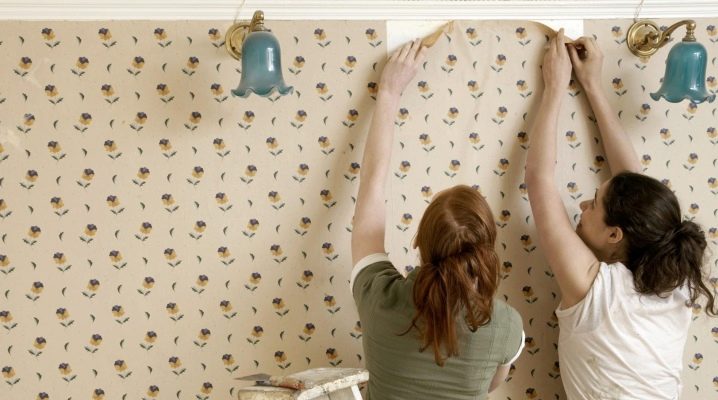
Wallpaper is a modern finishing material that allows you to get a beautiful and attractive wall surface. Today manufacturers produce many modifications of such products, differing in design and strength of the base. The application of canvases is carried out using special adhesives, which allow to obtain strong adhesion between the material and the surface. But this condition is also influenced by the quality of the walls to which the products are fixed. Therefore, it is important to learn how to prepare the walls for wallpapering.
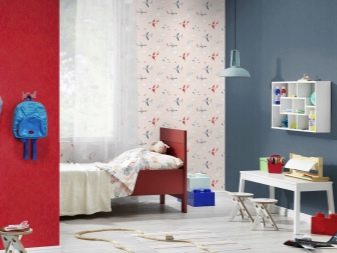
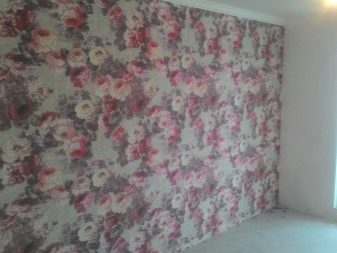
What are the problems?
Pasting wallpaper is one of the easiest ways to change the design of a room or home in general. The variety of materials allows you to create versatile interiors adapted to specific styles. But to get a similar effect, you should pay attention to the condition of the walls before applying the canvases. It depends on how long and qualitatively the wallpaper will stay on the surface.
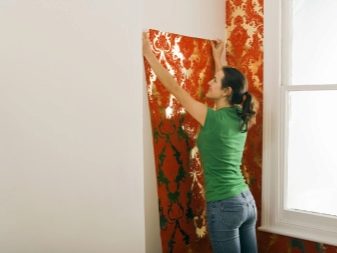
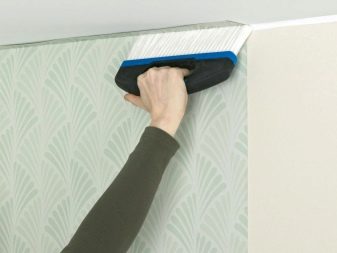
Wall treatment before wallpapering is needed to solve several main problems:
- Uneven surfaces. It is theoretically possible to glue paper canvases on curved walls, but this will not allow you to get the desired effect. The joints between the sheets will be uneven, while forming overlaps or significant gaps. Therefore, in order to apply the wallpaper with high quality, you should first repair the base.
- Unstable foundation. The walls in many apartments have already been covered with plaster several times, which can flake off. This can lead to the fact that the wallpaper will not adhere tightly to the surface and quickly fall off. Small cavities can form inside such bases, leading to the formation of drafts and other unpleasant phenomena.
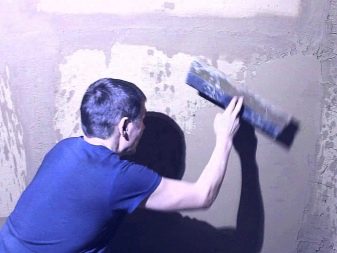

- Fungus. Mold often develops in humid environments. If it appears on the wall, it means that the surface quickly absorbs water and does not dry out. In such cases, it is necessary to treat the walls with special substances, as well as additional plastering of the base. In some cases, in order to get rid of this phenomenon, it will be necessary to remove the top layer of wall decoration, in which the causative agents of the spores are located.
- Dirty base. Wallpaper glue is intended for processing only certain types of materials. If there are greasy, oil stains or paint on the surface of the wall, then it will simply not be possible to fix the canvas. After a certain period, the substance will simply peel off and fall off.
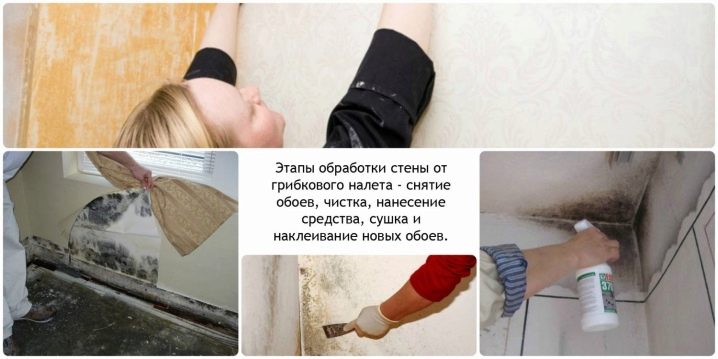
It is imperative to prepare the surface, even if there is none of the above problems. But at the same time, special compounds are applied to the wall, which only improve the quality of adhesion between the material and the base.
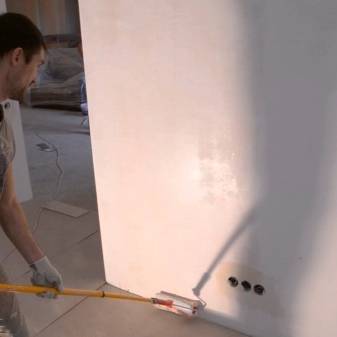
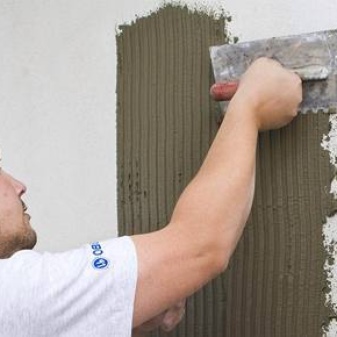
Required tools
Decorating walls before wallpapering is a complex procedure that requires patience and accuracy. In this case, a person has to use many additional building substances that he applies to the surface.
To simplify and speed up this procedure, you should stock up on several basic tools:
- Several types of spatulas. They allow for better surface treatment when leveling them or dismantling the old coating. In this case, you will need both metal and rubber tools of various sizes.
- Construction mixer. The mechanisms allow you to quickly and efficiently mix the solutions with which the walls will be processed.
- Individual protection means. This includes everything from rubber gloves, goggles to protective respirators.
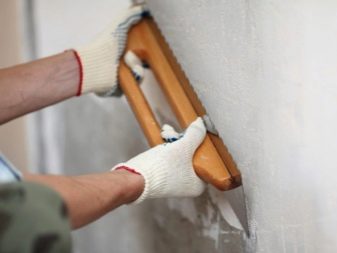

- Roller. Use it to apply a primer or other liquid substances.
- Skins different sizes.
- Level or plumb line. If the walls are aligned, then you should take care of the presence of special beacons to facilitate this procedure.
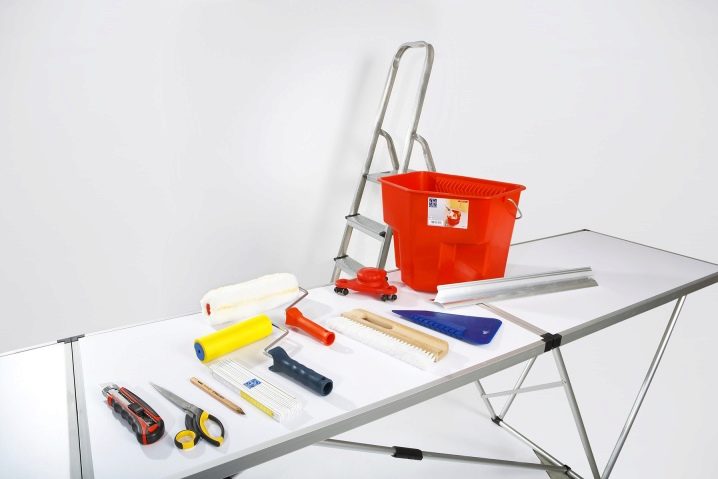
If it is supposed to remove the old coating or clean the walls, then for such purposes you will need:
- Building hair dryer. With its help, the paint is heated to make it easier to remove it from the surface.
- Grinder with several types of attachments. It is used for mechanical removal of paints or auxiliary leveling of surfaces. During the operation of this device, a lot of dust is generated, therefore it is important to protect not only the furniture inside the room, but also the human respiratory organs.


Mixes
Wall preparation is a complex complex procedure that includes the use of many auxiliary products. To solve such problems, you should often stock up on several types of mixtures:
- Plaster. Similar products are used for leveling walls. Today there are many types of such substances, which differ in the structure and quality of the components. The most popular are gypsum-based mixtures, to which a fine fraction of sand is added. They are intended for the final leveling of the walls, but they are not used if thick layers need to be formed. Cement-sand materials are used as primary plasters. Often they can be found during the initial decoration of walls in new buildings, where they are not yet covered with anything.
- Primer. Use it just before pasting the wallpaper. These substances are liquid mixtures that should not be prepared as in the previous case. The composition of these solutions includes many different components that allow you to increase adhesion between surfaces, as well as, if necessary, to act on harmful microorganisms. Therefore, they are very often used in the fight against mold, which is physically impossible to remove.
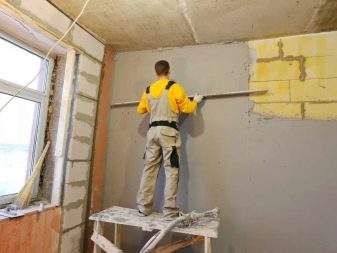
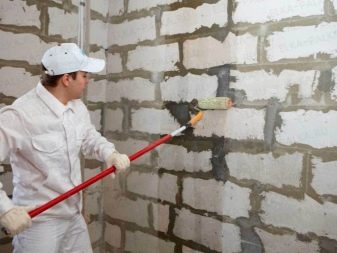
Primers can be conditionally divided into several main types:
- Acrylic. Mixes are versatile, as they can be used to process almost all types of wall materials. Among the advantages of the products are a minimum of odor and quick drying.
- Alkyd. This type of mixture is perfect only for wooden walls, so their use is limited today.
- Mineral. The main components of this solution are lime, gypsum and cement. Designed for coating concrete and brick surfaces. Some species take a long time to dry.
- Deep penetration primers. The main direction of these products is to increase the strength parameters of the walls. The mixtures can penetrate up to 2 cm deep, which also allows them to influence the development of mold and fungi from the inside as well.
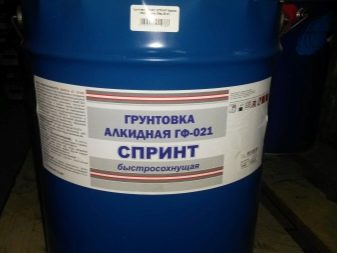
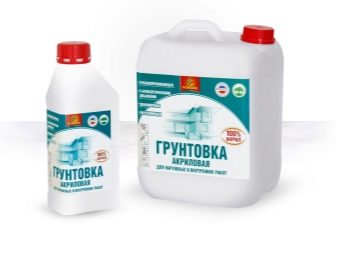
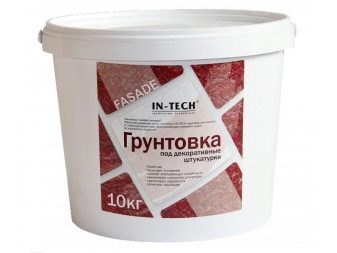
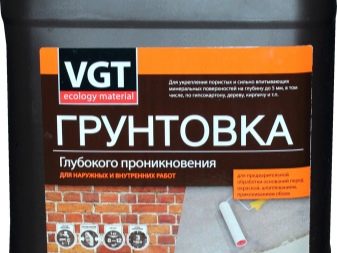
Many primers are made with the addition of a coloring pigment, which is important for some types of wallpaper.
Stages and order of work: what to consider?
The technology for preparing the walls before gluing the wallpaper depends only on their initial state and the material that will be attached to them. This procedure can be broken down into several sequential steps:
- General preparation. This includes pre-cleaning the walls from dirt or old protective materials. This process can be drastically different depending on what was previously painted on the wall. If these are ordinary old wallpaper, then they should simply be removed. The preparation of painted surfaces is considered more difficult. Today, many argue that such walls are perfect for gluing. It is only necessary to make several logs on the paint in several places, which will increase the adhesion between the glue and the wall. But it is best to completely remove the paint from the surface. This can be done both mechanically with the help of a grinder and a grinding wheel, and with special chemical liquid solutions.
- Preliminary primer. Impregnating the wall will degrease it and slightly strengthen the adhesion between the remaining components. For such purposes, various types of mixtures are used, which can be purchased at hardware stores.

- Putting. This process is complex and also depends on the state of the surface. If the walls or ceiling were leveled earlier, then their preparation for gluing involves removing small irregularities and filling cracks with a putty. Recently plastered surfaces, which have already been processed and without the use of putty, also lend themselves to minimal impact. A more common case is when the geometry of the walls in the room is not respected. Therefore, it is important to properly prepare such planes for the application of materials. The procedure begins with the alignment of the corners, which should be joined strictly at an angle of 90 degrees. This will allow you to get smooth joints without gaps and drops. After that, they begin to level the walls themselves. To do this, a thin layer of plaster is applied to them in places where there are significant differences.
It is important to create a smooth transition in order to get a completely flat surface. If the differences are significant, then only a new screed on the entire plane will help to align such a defect.
- Padding. Finishing with primer mixtures is always carried out before gluing almost all types of wallpaper.
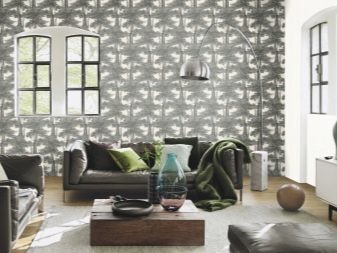
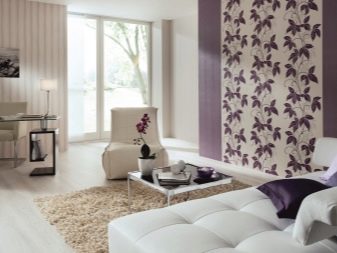
Surface material
Wallpaper today can be glued not only inside apartment buildings, where the walls are made of concrete or plastered. Similar materials are great for other substrates as well.
Therefore, it is important to properly prepare them depending on the type of surface:
- Concrete walls. Wallpaper does not stick to this material, as it absorbs moisture well, which will affect the operation of the sheets. Therefore, experts recommend finishing concrete. This procedure begins with cleaning the surface with fine sandpaper. It is important to then remove all dust and prime the wall. To prepare the concrete, the wall should be completely covered with putty. This will not only flatten the plane, but also minimize moisture absorption. A similar algorithm can be used for brick walls that need additional plastering.
- Drywall. Walls made of this material are an ideal base for wallpapering. When preparing them, you should pay attention to the joints between the sheets, where cracks are formed. Many experts recommend covering the drywall with a thin screed, which will hide all defects and make them invisible after gluing. It is imperative that after this procedure, the material is primed in order to increase adhesion.
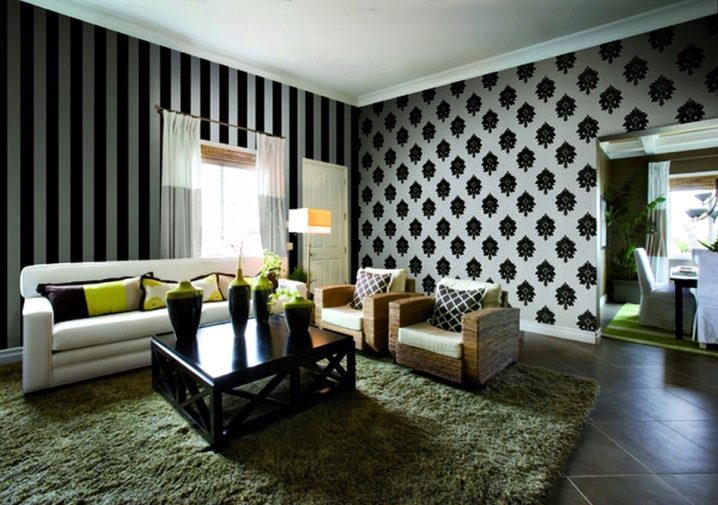
- Plywood, chipboard and other wood-based panels. These substances are also very common as wall surfaces. Theoretically, you can fix the wallpaper on them without preparation. But this approach is not always optimal, since the wood swells quickly and breaks down. To improve adhesion, experts recommend completely filling the boards or additionally covering them with special paper, which will act as an intermediate layer.
- Clay. Clay walls are not so common, since this material is used as a building material only by lovers of environmentally friendly technologies. If the clay walls are fairly flat, then they do not need additional preparation. But this does not exclude their priming, as this step is necessary for all types of substrates.
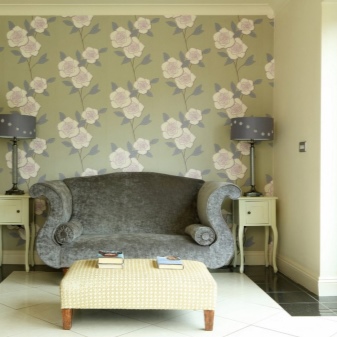

What kind of wallpaper do we glue?
The type of wallpaper also affects the surface preparation algorithm for fixing it.
It is important to take into account a few simple nuances:
- Paper ones are of insignificant thickness, so even small irregularities will appear through them. Therefore, the walls under them must be perfectly flat.
- Base processing should be carried out only with the use of reinforcing mesh.This applies to those areas of the house where there is a risk of cracks that will lead to rupture of the material.
- The surface for vinyl wallpaper or non-woven backing materials may have slight unevenness, which they will hide. A feature of these types is that they do not let (non-woven only after painting) air into the wall structure. This, in turn, can lead to the development of a fungus. To eliminate this, the bases must be impregnated with special antiseptics.
- Liquid wallpaper is a certain layer of decorative plaster, which allows you to hide significant irregularities. But it is still recommended to level the walls under them, since when replacing them with other types, this will allow them to be applied faster and better.
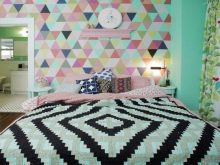

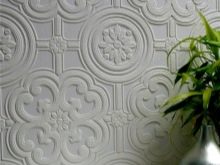
Electrician
The electrical network is often located directly on the surface of walls or inside them. If your cable is simply nailed from above, then it is advisable to place it in special grooves, which are small channels.
The process of preparing walls for wallpaper also includes several operations with electrical appliances:
- Dismantling of external elements. Remove switch and sockets before applying primer or putty. In this case, their insides should be carefully protected from dirt and third-party materials.
- Replacing the cable. Almost all the wiring today is hidden under the wallpaper, which does not allow it to be repaired efficiently and in a timely manner. Therefore, if your network is quite old and cannot withstand the loads, replacing the wallpaper is an opportunity to completely change all the wiring to a new one. This operation is optional and depends only on the state of the electrical network.
Please note that all the operations described above should only be performed with the electricity disconnected. The safety of the builder who will prepare the walls depends on this.
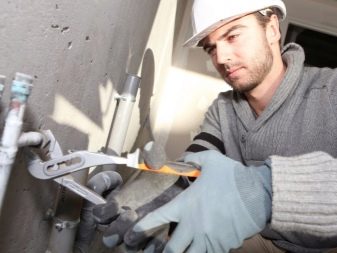
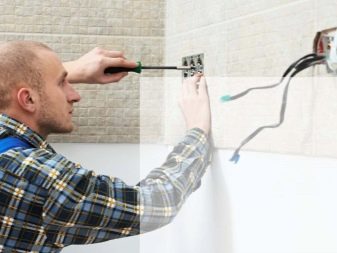
Wall covering color
The peculiarity of any wallpaper is that it consists of several layers. This, in turn, can affect not only the strength, but also the transmission of the base color. Today, after gluing many types of wallpaper, a dark base or various types of stains appear through them. This feature only applies to thin sheets as well as liquid materials. To eliminate this, you should glue them on walls of light shades.
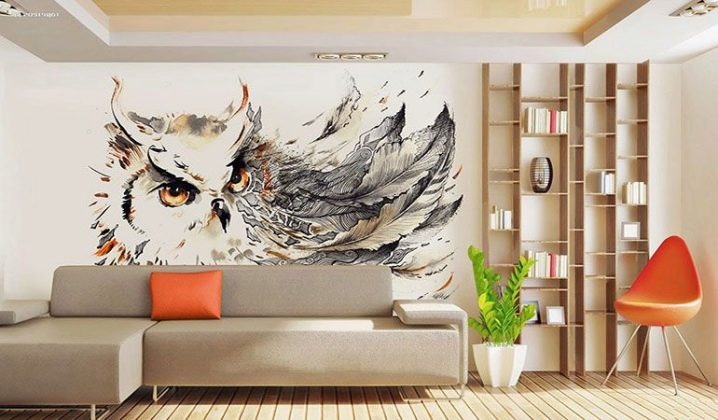
Before gluing the wallpaper, it is recommended to paint the base in light colors using lime or special primers. A similar approach is required for concrete and clay surfaces, which have significant contrast.
Please note that if you use thick wallpaper, then stains will not show through. They can only be noticeable if the wallpaper has a transparent texture that allows you to see the darkening underneath the main layer of the wall covering.
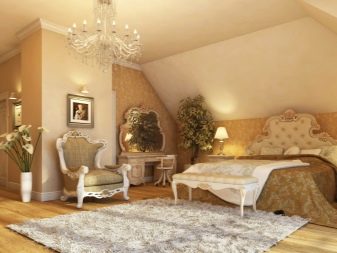
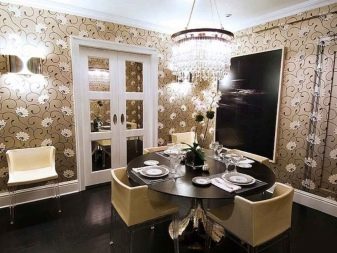
Tips & Tricks
Preparing walls for wallpapering is a rather complicated procedure that includes many different operations.
To get a high-quality result, you should follow a few simple recommendations:
- It is advisable to putty the walls in several layers. It is best to start this procedure from the top.
- When choosing finishing materials, you should pay attention to what surfaces they are intended for. It is important that they are compatible with the base, as the durability of their service depends on this.
- Regardless of the wallpaper used, the walls should be leveled as evenly as possible. This will allow you to use them in the future to work with various materials. After dismantling the old sheets, you only need to clean the surface and prime it. The versatility of flat walls is that they can also be used both for gluing and for painting.
- The base is covered with white whitewash only if necessary. If you make its full alignment, then it will be light after applying the finishing putty.
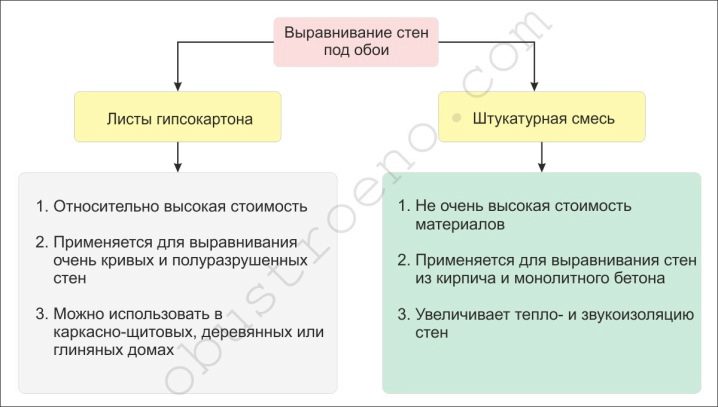
Successful examples and options
Interior wall decoration for wallpapering is a universal opportunity to solve several problems at once:
- Application of the canvases will become much easier, which will significantly save time.
- Smooth walls allow you to decorate the room with various elements that were previously impossible to install.
You can decorate the walls beautifully with your own hands, as this does not require special knowledge. It is only important to choose the right materials that are suitable for solving certain problems.
You can also simplify this task with the help of drywall sheets, which are suitable for leveling surfaces and need only minimal preparation before pasting.
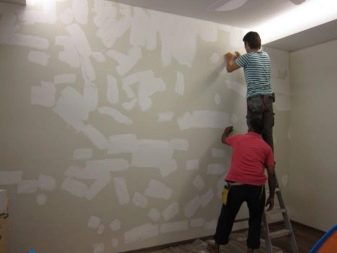

Here is one example of how a wall looks perfect, which was leveled with drywall and pasted gray wallpaper. Despite the seemingly gloomy shades, the design of the room looks great thanks to the right furniture and bright accents - pillows.
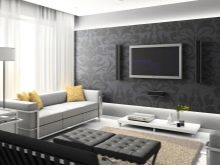

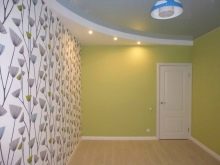
Another original design that I managed to get with the plasterboard wall and wallpaper. Everything is selected with delicate taste and looks wonderful.
Prepared walls are a universal possibility of using almost any finishing materials.
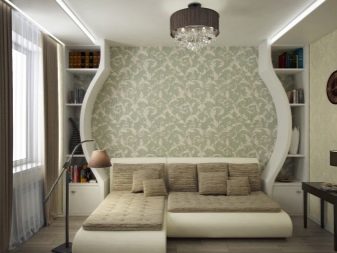
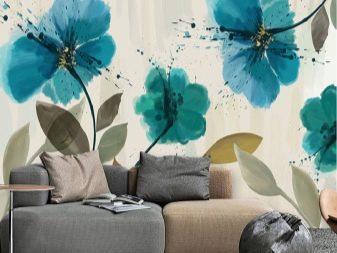
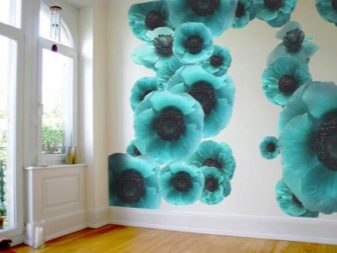
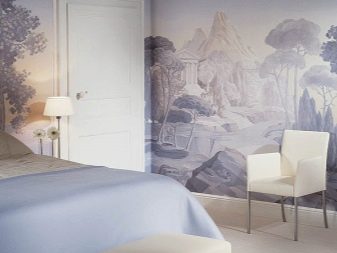
See the video for the preparation of the walls for gluing wallpaper with your own hands.













Before gluing, you need to thoroughly putty the walls, but so that the putty does not shine through the wallpaper.
The comment was sent successfully.